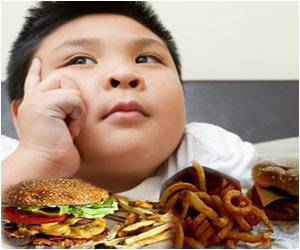New study explores five commonly held perceptions that do not agree with current scientific knowledge surrounding the environmental impacts of single-use plastic.

‘Reusable products have lower environmental impacts only when they are reused a sufficient number of times to compensate for the raw materials and energy used to make them.
’





In reality, most of the environmental impacts of many consumer products, including soft drinks, are tied to the products inside, not the packaging, according to the University of Michigan environmental engineer Shelie Miller.And when it comes to single-use plastics, in particular, the production and disposal of packaging often represent only a few percent of a product's lifetime environmental impacts, according to Miller, author of an article.
"Consumers tend to focus on the impact of the packaging, rather than the impact of the product itself," said Miller, an associate professor at the School for Environment and Sustainability and director of the U-M Program in the Environment. "But mindful consumption that reduces the need for products and eliminates wastefulness is far more effective at reducing overall environmental impact than recycling.
"Nevertheless, it is fundamentally easier for consumers to recycle the packaging of a product than to voluntarily reduce their demand for that product, which is likely one reason why recycling efforts are so popular." The mistaken belief about the central role of plastic packaging is one of five myths that Miller attempts to debunk in her conventional wisdom-shattering paper, "Five misperceptions surrounding the environmental impacts of single-use plastic."
The five common misperceptions, along with Miller's insights about them, are:
Advertisement
- Plastic packaging is the largest contributor to a product's environmental impact. In reality, the product inside the package usually has a much greater environmental impact.
- The environmental impacts of plastics are greater than any other packaging material. Actually, plastic generally has lower overall environmental impacts than single-use glass or metal in most impact categories.
- Reusable products are always better than single-use plastics. Actually, reusable products have lower environmental impacts only when they are reused enough times to offset the materials and energy used to make them.
- Recycling and composting should be the highest priority. Truth be told, the environmental benefits associated with recycling and composting tend to be small when compared with efforts to reduce overall consumption.
- "Zero waste" efforts that eliminate single-use plastics minimize the environmental impacts of an event. In reality, the benefits of diverting waste from the landfill are small. Waste reduction and mindful consumption, including careful consideration of the types and quantities of products consumed, are far larger factors dictating the environmental impact of an event.
In her review article, Miller challenges beliefs unsupported by current scientific knowledge while urging other environmental scientists and engineers to broaden the conversation in their own research and in discussions that shape public policy.
"Efforts to reduce the use of single-use plastics and to increase recycling may distract from less visible and often more damaging environmental impacts associated with energy use, manufacturing and resource extraction," she said. "We need to take a much more holistic view that considers larger environmental issues."
Advertisement
Life-cycle assessment, or LCA, is a tool that researchers like Miller use to quantify lifetime environmental impacts in multiple categories, including climate change and energy use, water and resource depletion, biodiversity loss, solid waste generation, and human and ecological toxicity.
It's easy for consumers to focus on packaging waste because they see boxes, bottles, and cans every day, while a wide range of other environmental impacts is largely invisible to them. But LCA analyses systematically evaluate the entire supply chain, measuring impacts that might otherwise be overlooked, Miller said.
Packaged food products, for example, embody largely invisible impacts that can include intensive agricultural production, energy generation, and refrigeration and transportation throughout the supply chain, along with the processing and manufacturing associated with the food and its packaging, she said.
Miller points out that the well-worn adage "reduce, reuse, recycle," commonly known as the 3Rs, was created to provide an easy-to-remember hierarchy of the preferable ways to lessen environmental impact.
Yet, most environmental messaging does not emphasize the inherent hierarchy of the 3Rs. The fact that is reducing and reusing are listed ahead of recycling. As a result, consumers often over-emphasize the importance of recycling packaging instead of reducing product consumption to the extent possible and reusing items to extend their lifetime.
"Although the use of single-use plastics has created a number of environmental problems that need to be addressed, there are also numerous upstream consequences of a consumer-oriented society that will not be eliminated, even if plastic waste is drastically reduced," she said.
"The resource extraction, manufacturing, and use phases generally dominate the environmental impacts of most products. So, reduction in materials consumption is always preferable to recycling, since the need for additional production is eliminated."
Source-Eurekalert









